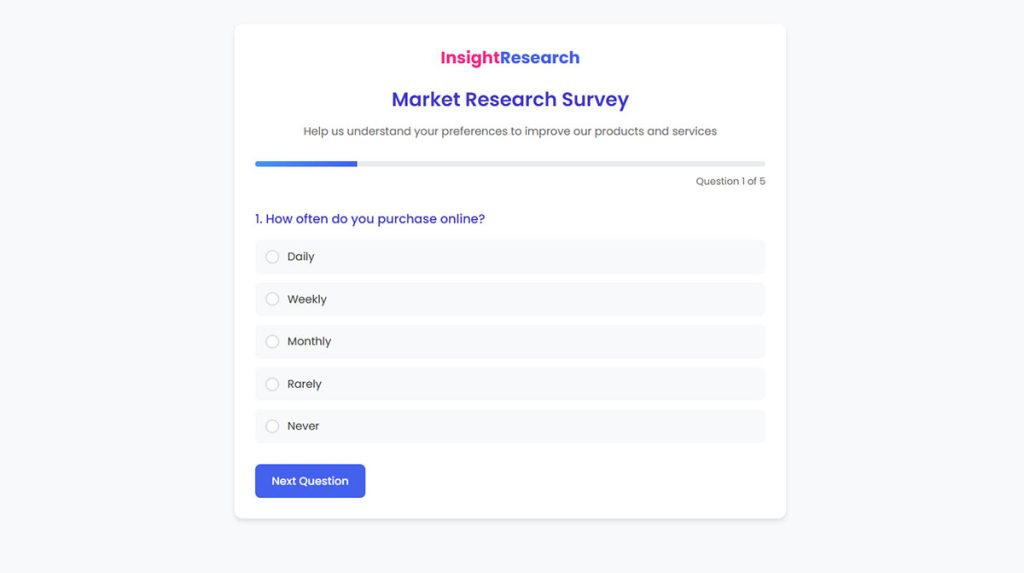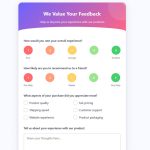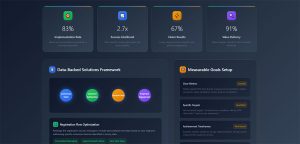You send a survey. Half your audience ignores it. The other half quits halfway through. Sound familiar? Survey fatigue is killing your response rates and destroying data quality. When participants…
Table of Contents
Looking for better ways to gather feedback? Survey form templates can transform how you collect and use data.
Good surveys drive decisions. Whether you’re measuring customer satisfaction or conducting market research, the right template saves time while improving response rates.
In this guide, we’ll explore form design samples that work across industries. You’ll discover:
- Ready-to-use questionnaires for different purposes
- Question formatting options that engage respondents
- Mobile-responsive surveys that reach more participants
- Form validation examples that ensure quality data
SurveyMonkey, Google Forms, and Typeform offer excellent starting points, but customization is key. We’ll show you how to adapt questionnaire layouts for your specific needs, incorporate rating scales effectively, and implement conditional logic to create dynamic experiences.
Avoid survey fatigue and boost completion rates with these professional survey layouts and data gathering forms.
Examples Of Survey Form Templates
Customer Feedback Survey Template
See the Pen
Modern Customer Feedback Survey by Bogdan Sandu (@bogdansandu)
on CodePen.
Employee Survey Template
See the Pen
Modern Employee Feedback Survey by Bogdan Sandu (@bogdansandu)
on CodePen.
Market Research Survey Template
See the Pen
Market Research Survey by Bogdan Sandu (@bogdansandu)
on CodePen.
Academic & Educational Survey Template
See the Pen
Academic & Educational Survey by Bogdan Sandu (@bogdansandu)
on CodePen.
Event Feedback Survey Template
See the Pen
Modern Event Feedback Survey with Pastel Theme by Bogdan Sandu (@bogdansandu)
on CodePen.
Patient Satisfaction Survey Template
See the Pen
Modern Patient Satisfaction Survey by Bogdan Sandu (@bogdansandu)
on CodePen.
Usability Feedback Survey Template
See the Pen
Usability Feedback Survey by Bogdan Sandu (@bogdansandu)
on CodePen.
FAQ on Survey Form Templates
What types of survey form templates are most effective for customer feedback?
Customer satisfaction forms with Likert scales work best. Include both multiple-choice question forms and open-ended questions for qualitative research. SurveyMonkey and Typeform offer ready-to-use questionnaires specifically designed for CSAT surveys that measure customer experience efficiently while preventing survey fatigue.
How can I create mobile-responsive surveys?
Use form builder examples like Google Forms or JotForm that automatically adjust to screen sizes. Focus on:
- Simple questionnaire layouts
- Single question per screen
- Touch-friendly rating scale templates
- Minimal form fields
- Progress indicators
These design choices improve respondent experience and boost completion rates.
What question types should I include in employee feedback forms?
Effective employee engagement surveys combine:
- Rating scales for satisfaction measurement
- Multiple choice for demographic surveys
- Open text for suggestions
- Branching question templates for role-specific feedback
Include anonymity features to encourage honest responses and improve data collection.
How long should a survey template be?
Keep it brief. Research shows optimal survey length is 5-10 questions with completion times under 5 minutes. Lengthy feedback collection tools cause survey fatigue and lower response rates. Focus on essential data gathering forms that respect participants’ time while collecting meaningful information.
What are the best practices for designing questionnaire layouts?
Prioritize clarity and flow. Start with simple demographic survey samples, then move to specific topic questions. Group related items together in your form design samples. Use consistent survey structure models with clear headings, proper spacing, and logical progression to maintain respondent engagement techniques.
How can I improve survey response rates?
Boost participation by using:
- Professional survey layouts with clear branding
- Mobile-responsive surveys
- Progress indicators
- Survey invitation templates with personalization
- Participant incentive models
- Strategic distribution channels
SurveyGizmo research shows properly designed templates can increase completion rates by 40%.
What’s the difference between quantitative and qualitative survey templates?
Quantitative templates use structured response collection templates like rating scales and multiple-choice questions for numerical analysis. Qualitative survey designs incorporate open-ended questions for gathering opinions and detailed feedback. Most effective opinion poll formats combine both approaches for comprehensive data collection.
How do conditional logic and branching work in survey templates?
Conditional logic creates dynamic survey question formats that change based on previous answers. This makes feedback form designs more relevant to each participant. Platforms like Qualtrics and SurveyMonkey offer branching question templates that show or hide questions based on specific responses, creating personalized respondent experiences.
Which survey platforms offer the best templates?
Top platforms include:
- SurveyMonkey: Extensive template library
- Google Forms: Free, user-friendly options
- Typeform: Interactive, engaging designs
- JotForm: Customizable form field examples
- Qualtrics: Advanced research question templates
Each offers different question type varieties and template customization options for various needs.
How can I analyze survey results effectively?
Look for templates with built-in data visualization templates and survey analytics tools. Platforms like Qualtrics and SurveyGizmo provide report templates that automatically organize responses. Consider electronic data capture features that integrate with analysis software for deeper insights into your polling template examples.
Conclusion
Finding the right examples of survey form templates can transform your data collection process. JotForm and Typeform offer customizable form templates that balance professionalism with participant engagement. A well-designed questionnaire layout makes all the difference.
Key takeaways for effective surveys:
- Choose industry-specific surveys that match your research goals
- Implement branching question templates for personalized experiences
- Focus on user-friendly survey designs to maximize completion rates
- Consider digital questionnaire formats for easier distribution
- Use Net Promoter Score and other proven methodologies
Remember that survey form design impacts the quality of responses. Evaluation form samples from established platforms provide starting points, but customization remains essential. Whether conducting academic research or gathering product feedback, the right information gathering forms will yield better insights.
Form submission options, participant anonymity features, and proper question type varieties all contribute to successful polling. Start with proven templates, then adapt to your specific needs.





